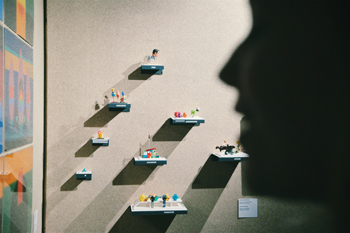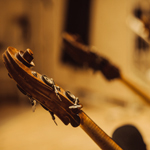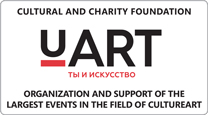30 April 2016
Innovation and сonservation
Text: Sergey Khachaturov
Photo: Alan Vouba
The deceptive cuteness of the toy world conceals
genuine passion and drive of the Primorsky Territory underground art, presented
in the Rebels Territory exhibition
The 11th exhibition of the finalists of the
Innovation contest, the all-Russian contemporary visual artists competition,
opened recently at the National Center for Contemporary Arts in Moscow. In my
particular case, the event is especially interesting to review, since I can
resort to double optics: that of a casual observer and that of an insider. In
fact, being a member of the Expert Board of the competition, I took part
in the first stage of the nominees’ selection, the online voting. However, I
was not responsible for the final shortlist, as I stepped down from the
Expert Board during the discussion, due to an ideological disagreement with
the Organizing Committee.
The resulting insider/outsider position has its
privileges. You note all the highs and lows of the project clearly
and in more detail. At the same time, corporate loyalty does not limit your
critical stance.
To the subject at hand. The prize has now seen its eleventh
edition and is awarded in five nominations: Work of Visual Art, Curatorial
Project, Art Theory and Criticism, New Generation, and Regional Project. One
must admit that, after more than ten years, even the titles of the nominations
need some corrections. Today, in the second decade of the 21st century, it
seems anachronistic to name the main nomination Work of Visual Art.
|

The exhibition design is inspired by drawing-boards in an architect’s
studio
|
Two years ago, there was a huge exhibition entitled Art or
Sound at Fondazione Prada in Venice. It was curated by the legendary Germano
Celant, who had initiated the Arte Povera movement back in the day.
The majority of exhibits in Art or Sound were created by key
representatives of the sound art movement, which by definition breaks the genre
and media barriers within traditional arts, fusing together music and visual
culture, performative practices and scholarly research. Often, works by Janet
Cardiff, George Bures Miller, and Susan Philipsz cannot be seen at all – they
belong to the realm of intellectual perception. They are sound sculptures.
Meanwhile, in 2010 Susan Philipsz received the Turner Prize, the main British
award in contemporary art, for her sound sculptures. So the notion of ‘work of
visual art’ by its very definition dulls the landscape of the contemporary art
process by excluding from it powerful trends and methods of communication with
the world. It seems symbolic that there is no winner in this nomination this
year.
The Regional Project nomination raises questions of
aesthetic and ethical nature alike. A few years ago, Arseniy Sergeyev, curator
from Yekaterinburg and member of the Expert Board, suggested terminating the
Regional Project nomination. He explained the reasons as follows: “It is
disgraceful and puts shame on the entire art community, especially the more
numerous and irresponsible Moscow part of it.” What did he mean? Perhaps, he
meant that today it would be unethical to intentionally divide art into
arbitrary sectors such as metropolitan and provincial. What would this divide
lead us to? To the acknowledgment of the fact that the capital city is the
reference point and the province is inferior by definition?
|
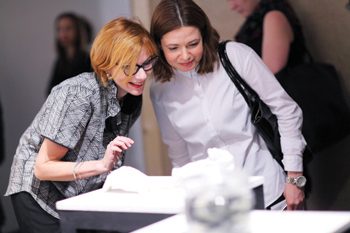
Olga Muromtseva and Yana Klevtsova of the U-Art Foundation,
one of the contest’s organizers
|
Otherwise, if the objective is to take into consideration
the whole diversity of tendencies across the territory of Russia, perhaps,
special nominations should be introduced for collective research projects or
international festivals. This year, thanks to similar logic, a huge program
entitled Observations of the Open Space, which brought together many
participants from different towns and countries, made it to the finals in the
Regional Project nomination. It was a three-week artistic research expedition
to the Divnogorye Reserve, organized by Yana Malinovskaya and Mikhail Lylov.
The expedition was aimed at studying the ‘collective memory’ of museums and
natural territory. Other nominees in this category aren’t attempting to ride
the regional status horse either, but rather explore the possibilities for
collaboration within the framework of a large-scale festival. The 13th St.
Petersburg festival Contemporary Art in the Traditional Museum curated by Elena
Kolovskaya, the 3rd Ural Industrial Biennale of Contemporary Art curated by
Alisa Prudnikova, and High Hopes Museum exhibition organized by Alisa
Savitskaya and Vladislav Efimov at the Arsenal in Nizhny Novgorod are all
projects of this kind. Perhaps, there is just one project with a specifically
regional character – Rebels Territory, covering contemporary art of the Russian
Far East from the underground of the 1960s–1980s to the present. Still, judging
by the presentation of the project, it focuses on research rather than on
establishing ill-interpreted independence and isolationism.
|
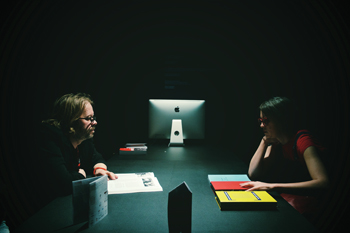
Alisa Savitskaya and Vladislav Efimov examine the publications
shortlisted for the Art Theory and Criticism nomination
|
The Curatorial Project nomination is less controversial.
There are five finalists, including Metageography, a remarkable investigation
into a popular subject curated by Kirill Svetlyakov and Nikolai Smirnov at the
State Tretyakov Gallery. Why do I set this one out? Because here, in contrast
to other projects, the authors had to almost literally fight for the audience.
Metageography was on display next to the exhibition of Valentin Serov, which
broke all possible records in visitor numbers. In historical perspective, the
project by Svetlyakov and Smirnov proved to be a decent counterpart for Serov.
It is fitting and fair that works by very young curators made it to the
shortlist as well: The Caucasus Pavilion (an entertaining anthropology of the
Caucasus as a part of the Moscow Biennale of Contemporary Art) and The Center
Red, an artist-run contemporary art space at the Red October factory. These
projects raise hopes about the future of curatorship.
The Art Theory and Criticism nomination also seems
problematic to me: each work seems to be marching to a different drummer. You
can’t put in the same category the media blog of the 6th Moscow Biennale of
Contemporary Art, Gleb Ershov’s fundamental research on the artist Pavel
Filonov, Olga Shishko’s catalogue of Projections of the Avant-Garde exhibition,
Alexander Shaburov’s original book project dedicated to B.U.Kashkin, a ‘punk
harlequin’ from the Urals, and Viktor Misiano’s fundamental three-volume
anthology The Impossible Community, which might not always be interesting to
readers not involved in curatorial practice. It is evident that currently the
Innovation Prize needs a more versatile toolkit to work with the contemporary
art life.
|
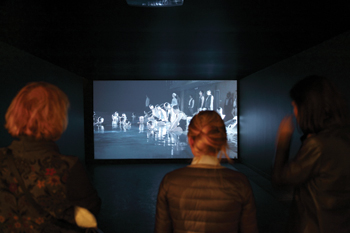
Pool video by Polina Kanis has a hypnotic effect on the viewers
|
The same conclusion can be drawn by looking at the New Generation nomination.
The allegorical, hieroglyphic video Pool by Polina Kanis can hardly be mixed
with Leonid Tskhe’s traditional painting series Neopetersburg. The latter are
wonderful examples
of Neo-Expressionist visual tradition, and it is absolutely
unclear how to compare them with the video or with Evgeniy Granilshchikov’s
post-conceptual exhibition War (Untitled). Similarly, the striking Volga video
by Aslan Gaisumov, precise and piercing in its focus on the tragic fate of the
Chechen people, stands completely apart from the above mentioned works in terms
of both meaning and communication.
Perhaps, to avoid multiplying entities and extending the
list of nominations and formulas, a more radical approach would make sense. For
instance, the New Generation nomination could work as a grant fund rather than
a single-winner prize, so that all finalists would receive parts of the sum
allotted to this category. This might also serve well toward building a
healthier environment for the competition and help leave behind such relics of
the past as jealousy and intrigues within the art community.
I suppose that the undisputed winner of this year’s
Innovation is Boris Orlov, a living classic of the USSR underground art and the
laureate in the non-competitive nomination For the Creative Contribution to the
Development of Contemporary Art. In the other non-competitive nomination, For
the Support of Russian Contemporary Art, the award goes to Leonid Mikhelson,
founder and president of V-A-C Foundation (Victoria – The Art of Being
Contemporary).
|
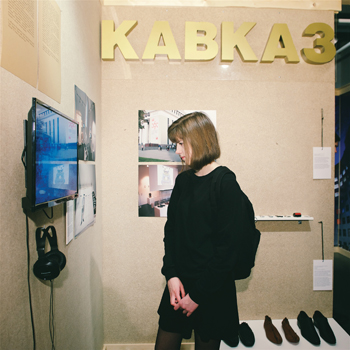
Young curators of The Caucasus Pavilion manage to present a witty,
engaging and delicate subject in the dialogue with the Oriental
culture
|
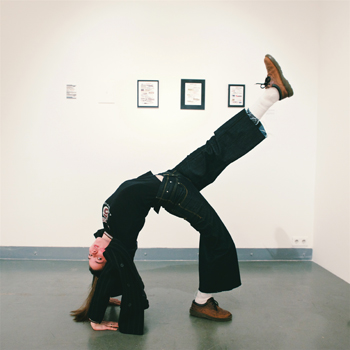
Young art is somewhat similar to acrobatic pas
|
3 May 2016
Opera is like a women. Full of life, restive, she always has to be accompanied by her counterpart, the stage play. This is the opinion of the musicologist, opera historian, critic, and and Merited Worker of Arts of Russia Mikhail Muginshtein. In April he presented the third volume of the encyclopedia “World opera Chronicles”, which was published with the support of the cultural charity fund U-Art.
15 December 2015
The VII Vivacello festival, organised by Boris Andrianov and the U-Art foundation, according to long standing tradition has brilliantly revealed the potential of this noble instrument to communicate in different areas of the artistic world
26 April 2015
AN ANNIVERSARY AWARD IN THE FIELD OF CONTEMPORARY ARTS IS GRANTED IN MOSCOW The X ceremony of awarding the prize of the State Centre for Contemporary Arts Innovation took place in Gostiny Dvor. The environment in which winners were awarded became a work of art itself.
12 March 2015
An exhibition dedicated to the 150th anniversary of the birth of Valentin Serov opened in the Russian Museum in Saint Petersburg. More than two hundred and fifty paintings, graphics and sculptures selected for the exhibit named “Serov, other than a portrait painter”, make the audience take a fresh look at the artist’s creative development. The exhibition is hosted under the
6 March 2015
An exhibition dedicated to the 150th anniversary of the birth of Valentin Serov opened in the Russian Museum in Saint Petersburg. More than two hundred and fifty paintings, graphics and sculptures selected for the exhibit named “Serov, other than a portrait painter”, make the audience take a fresh look at the artist’s creative development. The exhibition is hosted under the auspices of UNIDENT group of companies and “U-Art: You and Art” fund.
Back

